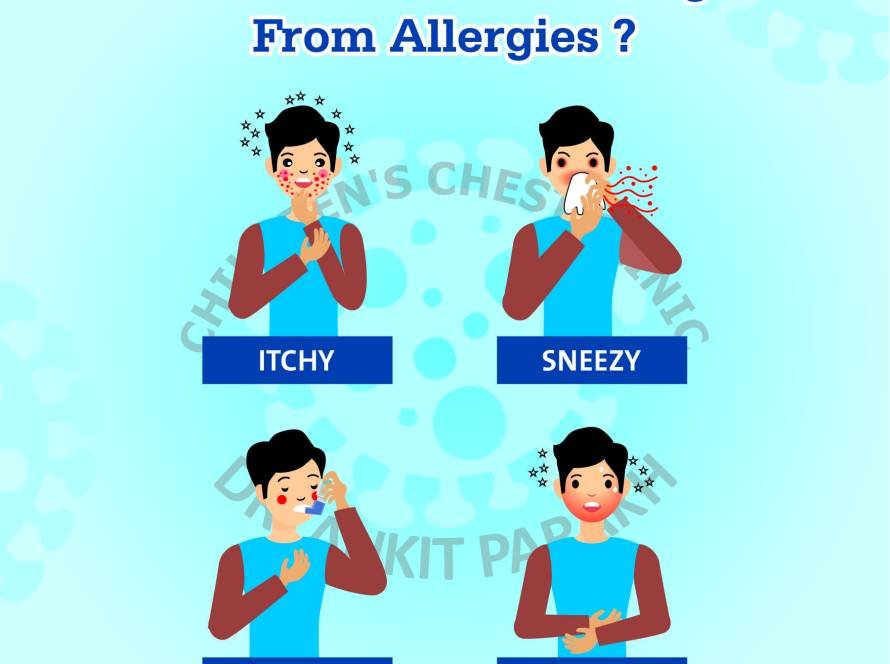Food allergy is an immune reaction that occurs when a child’s body reacts to the proteins in a particular food. Food allergy is a common allergy which is now increasingly seen in India. Food allergy is most commonly seen in infants and young kids although food allergy can be seen in adults also. Although food allergy can be seen in any food, more than 90% of food allergy reactions occur with eight common foods: cow’s milk, hen’s egg, wheat, soy, peanuts, tree nuts, fish and shellfish. Even a small amount of the allergy-causing food can trigger signs and symptoms of food allergy.
What are the types of food allergy?
Food allergies can be either IgE-mediated or non-IgE-mediated. The most common type of allergic reaction to food is known as an IgE-mediated food allergy. IgE-mediated food allergy is an allergy reaction where IgE antibodies cause an allergic reaction to a food. The symptoms occur within minutes of food ingestion and involve many systems as described below. Non-IgE mediated food allergy are caused by other components of the immune system apart from IgE antibodies. The non-IgE food reactions do not appear immediately after the ingestion of the allergenic food and symptoms are limited to the gastrointestinal tract such as vomiting, bloating and diarrhoea.

What are the common symptoms of food allergy?
Food allergy can lead to symptoms which occur almost immediately to within an hour after eating the food. The child would get these symptoms each time the food is consumed. The symptoms of food allergy involve many body symptoms. Food allergy symptoms could be mild to very severe life threatening reactions. Most common symptoms of food allergy are mild rash, hives and swelling over the tongue/lips/face (also called angioedema). Children with food allergies can develop tummy pain, vomiting and loose motions. Involvement of the respiratory system in food allergy causes cough, wheezing, chest pain, and breathlessness. Hay fever-like symptoms, such as sneezing or itchy eyes (allergic conjunctivitis) are also seen. Some children develop stridor due to swelling in the voice box. Dizziness and lightheadedness is also seen in food allergy reactions.
Can food allergy lead to “Anaphylaxis”?
Sometimes symptoms of food allergy can get worse very quickly leading to a severe, life-threatening reaction called “anaphylaxis”. Anaphylaxis starts with hives, itching, rash and swelling of tongue-lips. These skin problems are associated with respiratory problems like cough, breathing difficulty and shortness of breath and cardiovascular problems like hypotonia [collapse], syncope, incontinence and gastrointestinal problems like crampy abdominal pain, nausea and vomiting. Anaphylaxis is a medical emergency and without urgent care can be fatal.
What are the other conditions which can mimic food allergy in children?
Many other conditions can have signs and symptoms which are similar to food allergy symptoms. These conditions are irritable bowel syndrome, lactose intolerance, food additive sensitivity, celiac disease etc.
What investigations are required to confirm diagnosis of food allergy?
Allergy tests are required to confirm the diagnosis of an IgE mediated food allergy. Allergy tests could be either a Skin Prick Test or an allergy blood test called ImmunoCap. Skin Prick Test is considered to be the best investigation for identification of the allergen.
If your child has symptoms suggestive of allergies do get in touch with a pediatric pulmonologit/allergist for proper diagnosis and treatment.






